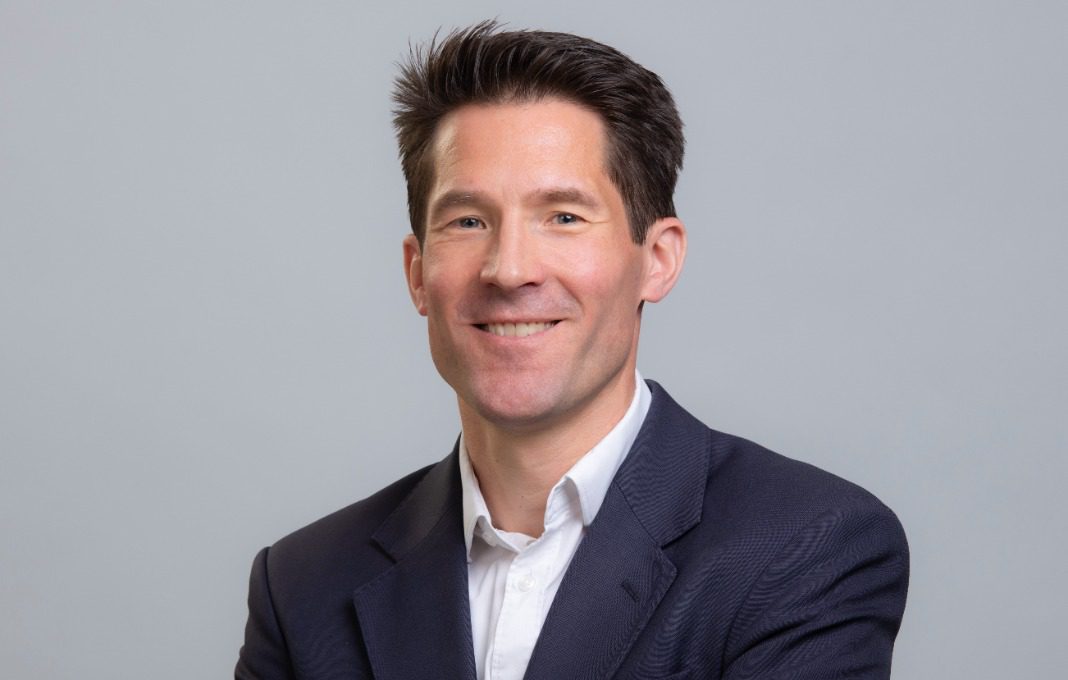How An Industrial Giant Is Muscling Into AI Boom


The boom in data-center construction related to the unleashing of artificial intelligence has been massive, and industrial leaders such as Schneider Electric can’t afford to be anywhere other than on the ground floor of a phenomenon that is transforming the global economy.
So the Paris-listed digital energy management and automation company, with a large U.S. presence, has been pressing for ways to get more involved in the construction of the hundreds of newly planned data centers around the world.
Schneider’s first major prong is a recently announced deal with Nvidia, the is leader in designing and making graphics-processing-unit (GPU) microchips for AI applications. Schneider’s second significant foray may involve mergers and acquisitions to position the company more rapidly as a leading player in the AI data-center arena.
“We are considering and discussing how we might use AI technology in terms of our M&A activity, but it’s too early for us to be considering acquiring companies that have AI technology,” Axel Tismer, Schneider’s senior vice president for M&A, tells Chief Executive.
Schneider earlier acquired American-bred brands such as Square D and now employs more than 19,000 people in dozens of factories and R&D centers spread across the United States. California-based Nvidia is the global leader in design of GPUs, a type of chip initially associated with video and computer games but turning out to be better at performing AI-related calculations than the central processing units made by companies such as Intel that long have served as the foundation for basic computing and software processes.
Now, with its specialty in digital transformation of energy management and automation, Schneider is collaborating with Nvidia to optimize data-center infrastructure and “pave the way for groundbreaking advancements in edge artificial intelligence (AI) and digital twin technologies,” as a recent Schneider press release put it.
Schneider will leverage its expertise in data-center infrastructure and Nvidia’s technology to introduce the first publicly available AI data-center “reference designs.” These designs validate and document plans for configuring and laying out the physical infrastructure of data centers including electrical, mechanical and IT systems.
With AI applications gaining traction across industries, while also demanding more resources than traditional computing, the need for processing power has surged exponentially. The rise of AI has spurred notable transformations and complexities in data-center design and operation, with data-center operators working to swiftly construct and operate energy-stable facilities that are both energy-efficient and scalable.
“We’re unlocking the future of AI for organizations,” said Pankaj Sharma, Schneider’s executive vice president of the secure power division and data-center business, in the press release. The company’s special focus will be on enabling high-power distribution, liquid-cooling systems and controls designed to ensure simple commissioning and reliable operations for the extreme-density clustering of computing power involved in enabling AI.
In general, Tismer says, Schneider Electric also is poised to take a more active stance on M&A, especially in the United States. He notes that M&A activity is “highly cyclical” but says overall activity in 2024 “is modestly up on last year—not a boom year, but improving.” Whether those gains will accelerate in 2025, he says, depends mostly on the course of the economy. “What M&A activity needs as ingredients is a stable economic outlook,” he says. “That doesn’t mean necessarily a booming economy, but predictability. It also means low volatility in financial markets, which we had until” recently.
“And it needs political and regulatory stability. We don’t have that this year in the United States, but by and large, lately the environment was relatively stable,” Tismer says. “If financial-market volatility dies down, post-[U.S.] election, I’d be pretty optimistic on the M&A market and M&A activity. There are some clouds on the horizon in U.S. economic picture, such as employment and consumer spending, but I also see fundamental positive drivers. Of the large developed economies, the U.S. is the one that has performed strongest since Covid. And with election uncertainty out of the way, we think those fundamentals of relatively full employment, strong corporate balance sheets and an overall benign outlook mean that the U.S. is in pretty good shape.”
At the same time, Schneider’s M&A thrust recently has been a corporate plunge into industrial software that “largely has been built through acquisitions over the last 10 years,” Tismer says. “Of our capital spending in America in that time, the lion’s share has been spent acquiring software companies.” Software still comprises only about €3 billion of Schneider’s €36 billion in annual revenues, “but it’s important in terms of profit and strategy, and it’s been an outsized consideration for our customers. It’s been transformational.”
But AI-related acquisitions now beckon as an important possibility, shoving their way to the top of the consideration pile as Schneider Electric jostles with other big companies for how best to participate in the data-center boom.
Such acquisitions are under consideration, Tismer says, “but [they’re] not top of mind today because it’s still such an emerging field.”


0

1:00 - 5:00 pm
Over 70% of Executives Surveyed Agree: Many Strategic Planning Efforts Lack Systematic Approach Tips for Enhancing Your Strategic Planning Process
Executives expressed frustration with their current strategic planning process. Issues include:
Steve Rutan and Denise Harrison have put together an afternoon workshop that will provide the tools you need to address these concerns. They have worked with hundreds of executives to develop a systematic approach that will enable your team to make better decisions during strategic planning. Steve and Denise will walk you through exercises for prioritizing your lists and steps that will reset and reinvigorate your process. This will be a hands-on workshop that will enable you to think about your business as you use the tools that are being presented. If you are ready for a Strategic Planning tune-up, select this workshop in your registration form. The additional fee of $695 will be added to your total.

2:00 - 5:00 pm
Female leaders face the same issues all leaders do, but they often face additional challenges too. In this peer session, we will facilitate a discussion of best practices and how to overcome common barriers to help women leaders be more effective within and outside their organizations.
Limited space available.

10:30 - 5:00 pm
General’s Retreat at Hermitage Golf Course
Sponsored by UBS
General’s Retreat, built in 1986 with architect Gary Roger Baird, has been voted the “Best Golf Course in Nashville” and is a “must play” when visiting the Nashville, Tennessee area. With the beautiful setting along the Cumberland River, golfers of all capabilities will thoroughly enjoy the golf, scenery and hospitality.
The golf outing fee includes transportation to and from the hotel, greens/cart fees, use of practice facilities, and boxed lunch. The bus will leave the hotel at 10:30 am for a noon shotgun start and return to the hotel after the cocktail reception following the completion of the round.